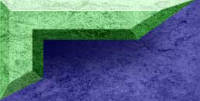All emails I've gotten have agreed that this is a Mottled Duck. Others who do not have experience with the species
asked me what do I look for. Let's go over the fieldmarks.
This bird is almost a carbon copy of many Mottles on the internet. It is identical to ones I've seen before.
It fits the Sibley Book to a tee.
Size is about one inch smaller than the Mallards. The slightly smaller size is noticeable. I compared it
with a number of Mallards. In contrast, Black Ducks are the same size. A Black Duck hybrid would
tend to be the same size. I've seen many Black Duck hybrids. I think I have reported more than any other birder
in GA. This is not like any hybrid I've ever seen.
The neck is noticeably thinner than the Mallards. Black Ducks do not have thinner necks, nor would I think a hybrid.
The crown is paler than a Black Duck, and consistent with Mottled. The supercilium is most consistent with Mottled
in my opinion.
Very noticeable while veiwing the live bird and not so much from the photos is the buffy, unmarked throat area, which
again is not a fieldmark of Black Duck, Mallard, or hybrid.
The bill is consistent with field guides, photos, and my experience for Mottled. The black spot on the gape is
there, though not extensive like in some breeding adults, but consistent with Mottled and not as much as with Mallard or Black
Duck.
The back feathers are consistent with Sibley Guilde, my experience with this speices, and most photos on the internet
of birds known to be Mottles. The back seems more consistent with the juvenile Mottled in Sibley. It is not consistent
with hybrids that I have seen.
When I viewed the outstretched wing, it was identical to the specimen wings and to the reference guides.
The speculum is more consistent with Mottled than Black Duck and doesn't support hybrid. The speculum is more a
bluish purple than a purple color of Black Duck. The bird had a very faint white trailing edge to the speculum.
This is hard to see, though I captured it in some photos. A couple times I saw just the faintest white leading edge
of the speculum. This is supportive of Mottled only.
Buffy Chevrons can be seen on the body feathers supporting Mottled. Sibley describes it as a warm brown color which
can be seen in the photos. The bottom photo shows this more because I used a better camera for that shot.
The tail was all dark. I think one photo gives the illusion of a white edge on the tail, but that was something
white in the background. The dark tail would not fit a hybrid. Also, there was no curl to the tail which hybrids
sometimes have.
Also, last but not least, the overall jizz was that of a Mottled.
So, what is it doing here? Well, Mottles have been recorded inland in other states including Tennessee. I
was looking at a photo of one seen up there, and it is similar to this one. So yes, birds can travel far...after
all, they do have wings!
Eric Beohm

